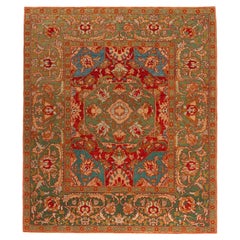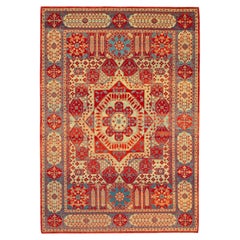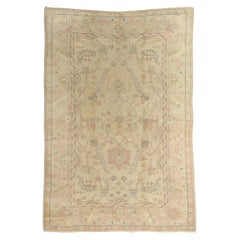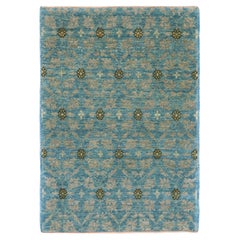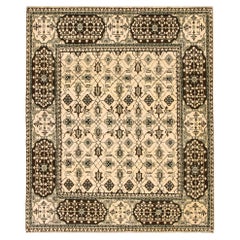Revival Turkish Rugs
21st Century and Contemporary Turkish Revival Turkish Rugs
Wool, Natural Fiber, Organic Material
21st Century and Contemporary Turkish Revival Turkish Rugs
Wool, Natural Fiber, Organic Material
21st Century and Contemporary Turkish Revival Turkish Rugs
Wool, Natural Fiber, Organic Material
Early 20th Century Turkish Revival Turkish Rugs
Wool
21st Century and Contemporary Turkish Revival Turkish Rugs
Wool, Natural Fiber, Organic Material
21st Century and Contemporary Turkish Revival Turkish Rugs
Wool, Natural Fiber, Organic Material
21st Century and Contemporary Turkish Revival Turkish Rugs
Wool, Natural Fiber, Organic Material
21st Century and Contemporary Turkish Revival Turkish Rugs
Wool, Natural Fiber, Organic Material
21st Century and Contemporary Turkish Revival Turkish Rugs
Wool, Natural Fiber, Organic Material
21st Century and Contemporary Turkish Revival Turkish Rugs
Wool
20th Century Turkish Revival Turkish Rugs
Wool, Cotton, Foam
21st Century and Contemporary Turkish Revival Turkish Rugs
Wool, Natural Fiber, Organic Material
21st Century and Contemporary Turkish Revival Turkish Rugs
Wool, Natural Fiber, Organic Material
21st Century and Contemporary Turkish Revival Turkish Rugs
Wool, Natural Fiber, Organic Material
21st Century and Contemporary Turkish Revival Turkish Rugs
Wool, Natural Fiber, Organic Material
21st Century and Contemporary Turkish Revival Turkish Rugs
Wool, Natural Fiber, Organic Material
21st Century and Contemporary Turkish Revival Turkish Rugs
Wool, Natural Fiber, Organic Material
21st Century and Contemporary Turkish Revival Turkish Rugs
Organic Material, Natural Fiber, Wool
21st Century and Contemporary Turkish Revival Turkish Rugs
Wool, Natural Fiber, Organic Material
21st Century and Contemporary Turkish Revival Turkish Rugs
Wool, Natural Fiber, Organic Material
Mid-20th Century Turkish Revival Turkish Rugs
Wool
21st Century and Contemporary Turkish Revival Turkish Rugs
Wool, Natural Fiber, Organic Material
21st Century and Contemporary Turkish Revival Turkish Rugs
Wool, Natural Fiber, Organic Material
21st Century and Contemporary Turkish Revival Turkish Rugs
Wool, Natural Fiber, Organic Material
21st Century and Contemporary Turkish Revival Turkish Rugs
Wool, Natural Fiber, Organic Material
21st Century and Contemporary Turkish Revival Turkish Rugs
Wool, Natural Fiber, Organic Material
21st Century and Contemporary Turkish Revival Turkish Rugs
Wool, Natural Fiber, Organic Material
21st Century and Contemporary Turkish Revival Turkish Rugs
Wool, Natural Fiber, Organic Material
21st Century and Contemporary Turkish Revival Turkish Rugs
Wool, Natural Fiber, Organic Material
2010s Turkish Revival Turkish Rugs
Wool, Organic Material, Natural Fiber
21st Century and Contemporary Turkish Revival Turkish Rugs
Wool, Natural Fiber, Organic Material
21st Century and Contemporary Turkish Revival Turkish Rugs
Wool, Natural Fiber, Organic Material
21st Century and Contemporary Turkish Revival Turkish Rugs
Wool, Natural Fiber, Organic Material
21st Century and Contemporary Turkish Revival Turkish Rugs
Organic Material, Natural Fiber, Wool
21st Century and Contemporary Turkish Revival Turkish Rugs
Wool, Natural Fiber, Organic Material
21st Century and Contemporary Turkish Revival Turkish Rugs
Wool, Natural Fiber, Organic Material
21st Century and Contemporary Turkish Revival Turkish Rugs
Wool, Natural Fiber, Organic Material
21st Century and Contemporary Turkish Revival Turkish Rugs
Wool, Natural Fiber, Organic Material
21st Century and Contemporary Turkish Revival Turkish Rugs
Wool, Natural Fiber, Organic Material
20th Century Turkish Revival Turkish Rugs
Wool
20th Century Turkish Revival Turkish Rugs
Wool
Late 20th Century Turkish Revival Turkish Rugs
Wool
20th Century Turkish Revival Turkish Rugs
Wool
Mid-20th Century Turkish Revival Turkish Rugs
Wool
1970s Turkish Vintage Revival Turkish Rugs
Wool, Cotton, Natural Fiber, Organic Material
21st Century and Contemporary Turkish Revival Turkish Rugs
Wool, Natural Fiber, Organic Material
21st Century and Contemporary Turkish Revival Turkish Rugs
Wool, Natural Fiber, Organic Material
Mid-20th Century Turkish Revival Turkish Rugs
Wool
21st Century and Contemporary Turkish Revival Turkish Rugs
Wool, Natural Fiber, Organic Material
Mid-20th Century Turkish Revival Turkish Rugs
Wool
Mid-20th Century Turkish Revival Turkish Rugs
Wool
Early 20th Century Turkish Revival Turkish Rugs
Wool
Mid-20th Century Turkish Revival Turkish Rugs
Wool
21st Century and Contemporary Turkish Revival Turkish Rugs
Wool, Natural Fiber, Organic Material
21st Century and Contemporary Turkish Revival Turkish Rugs
Wool, Natural Fiber, Organic Material
21st Century and Contemporary Turkish Revival Turkish Rugs
Wool, Natural Fiber, Organic Material
21st Century and Contemporary Turkish Revival Turkish Rugs
Wool, Natural Fiber, Organic Material
21st Century and Contemporary Turkish Revival Turkish Rugs
Wool, Natural Fiber, Organic Material
21st Century and Contemporary Turkish Revival Turkish Rugs
Wool, Natural Fiber, Organic Material
21st Century and Contemporary Turkish Revival Turkish Rugs
Wool, Natural Fiber, Organic Material
